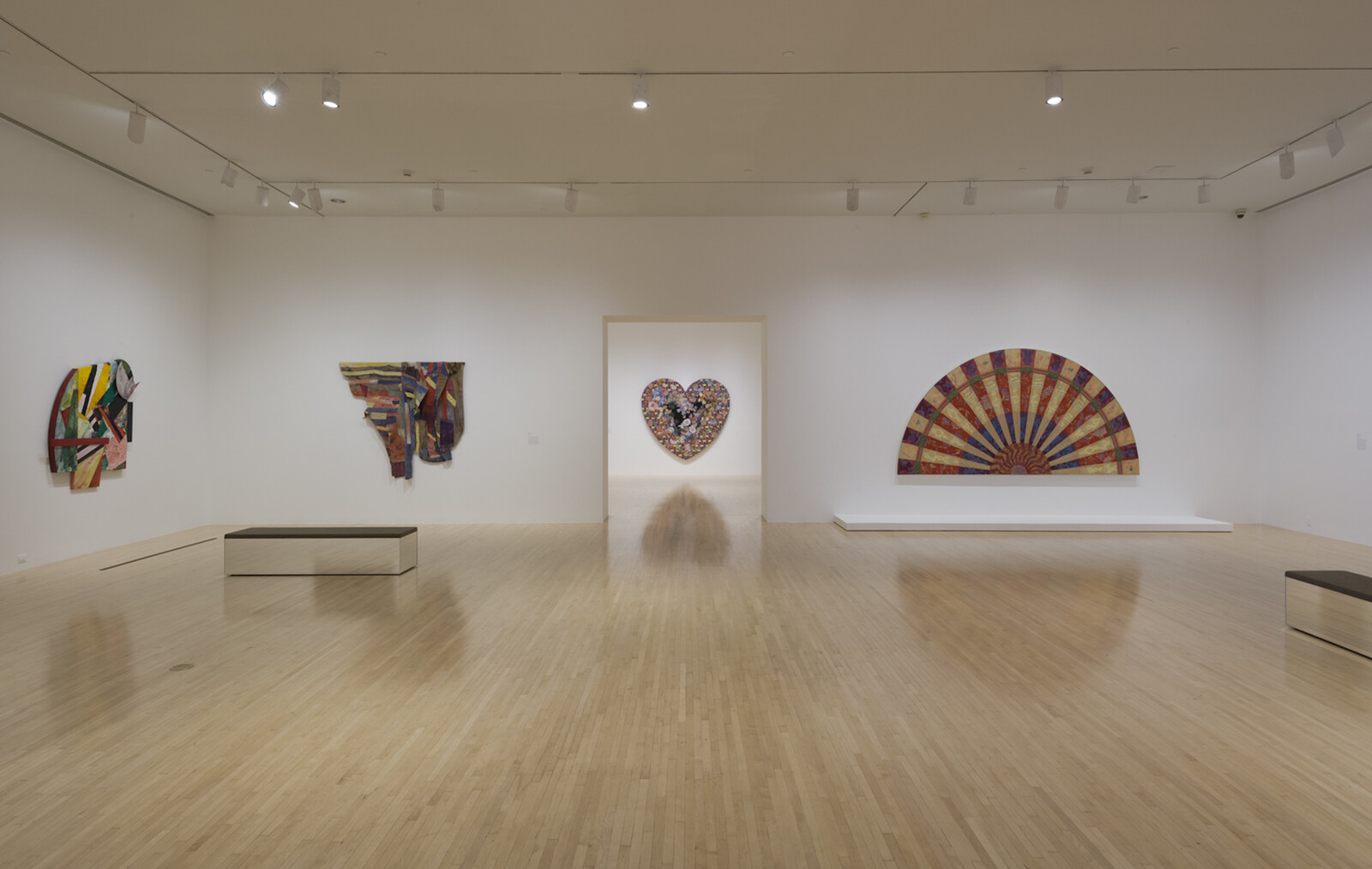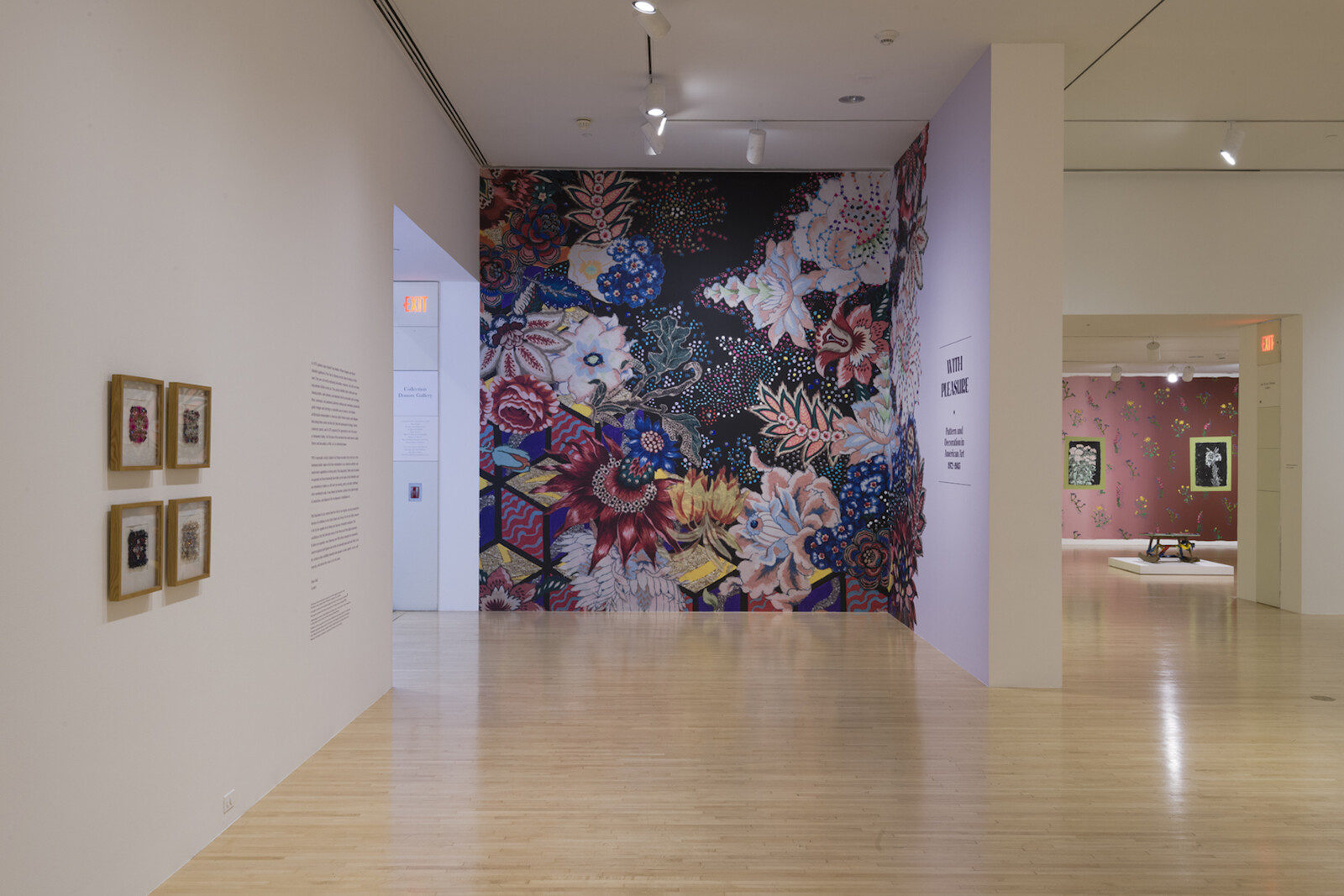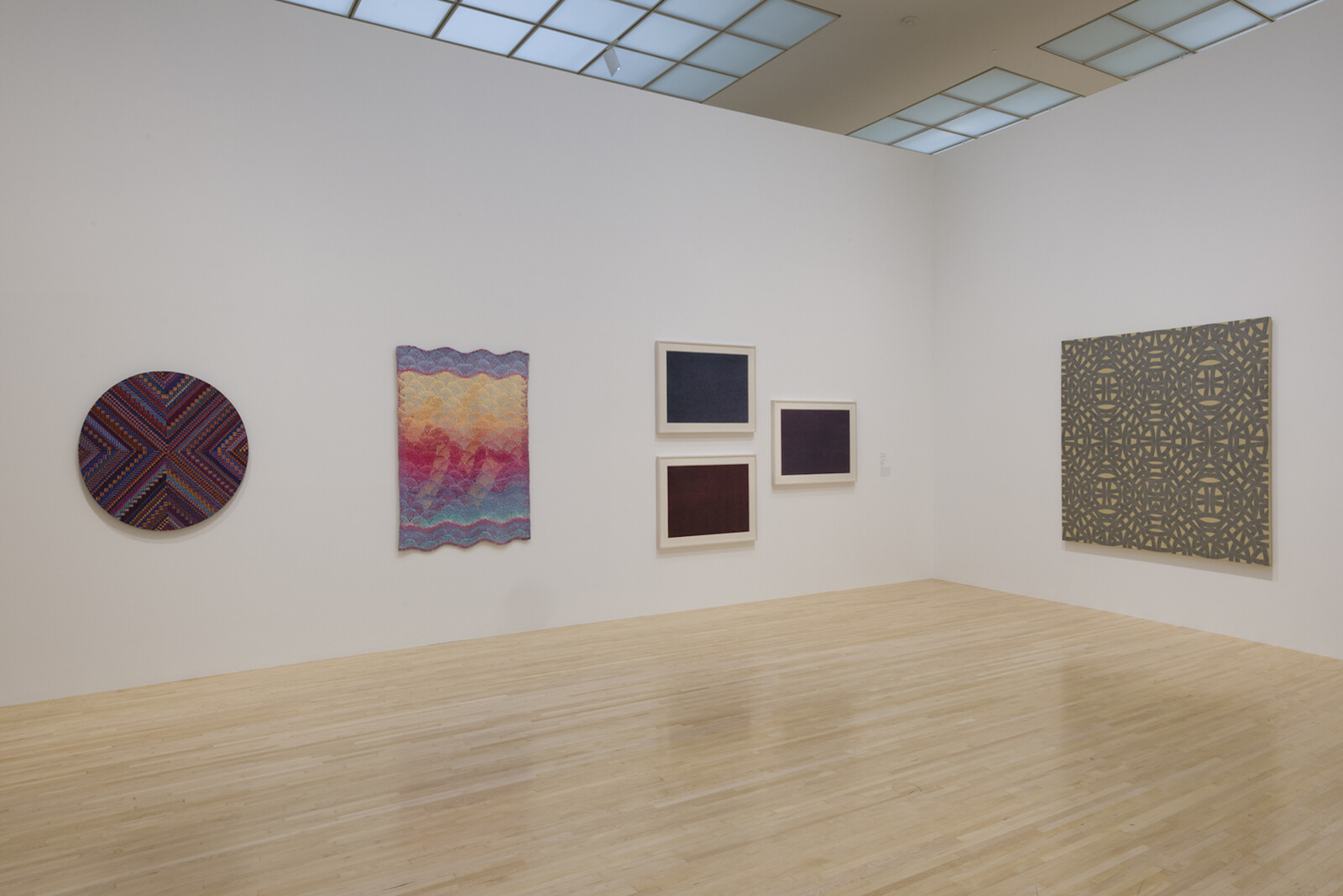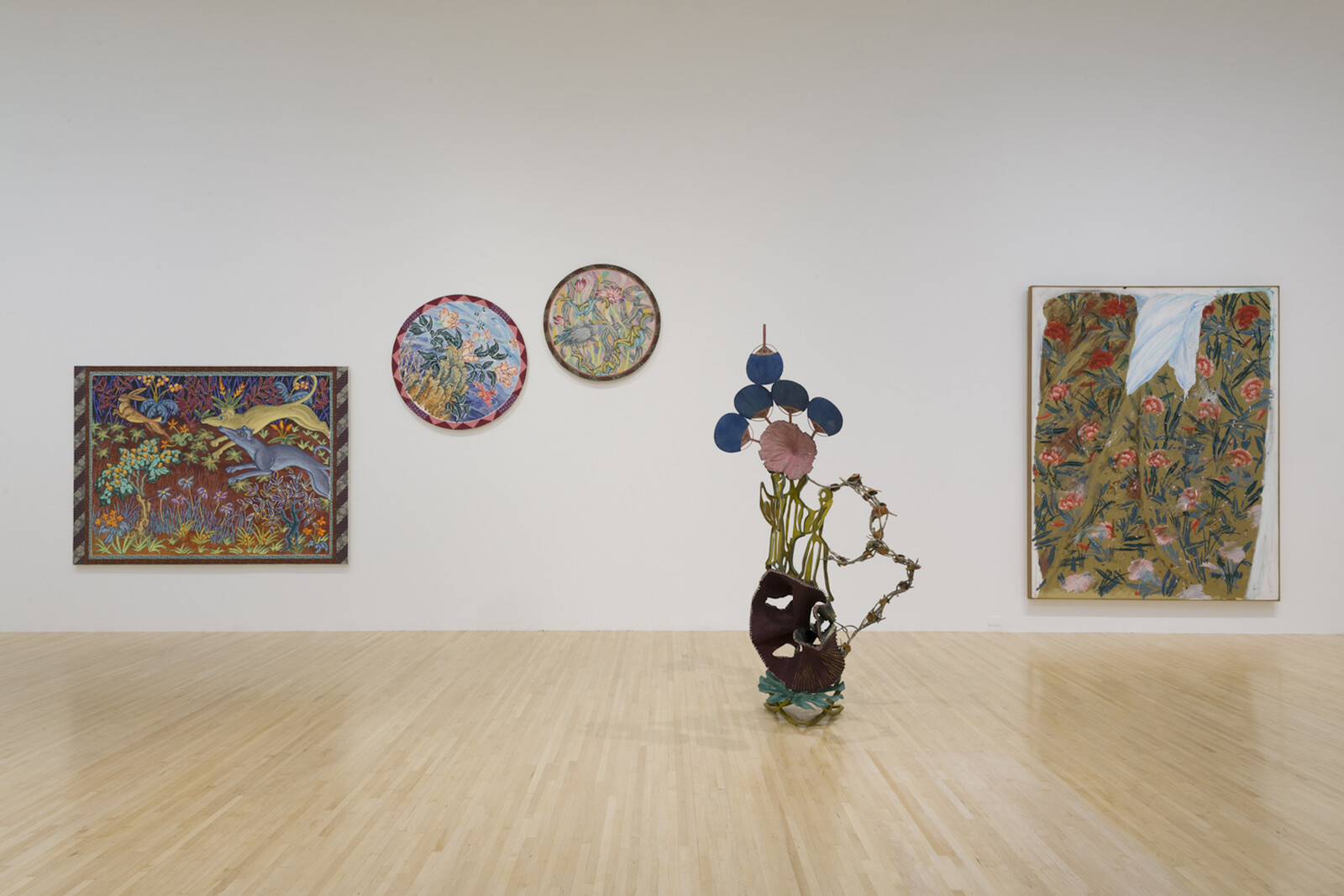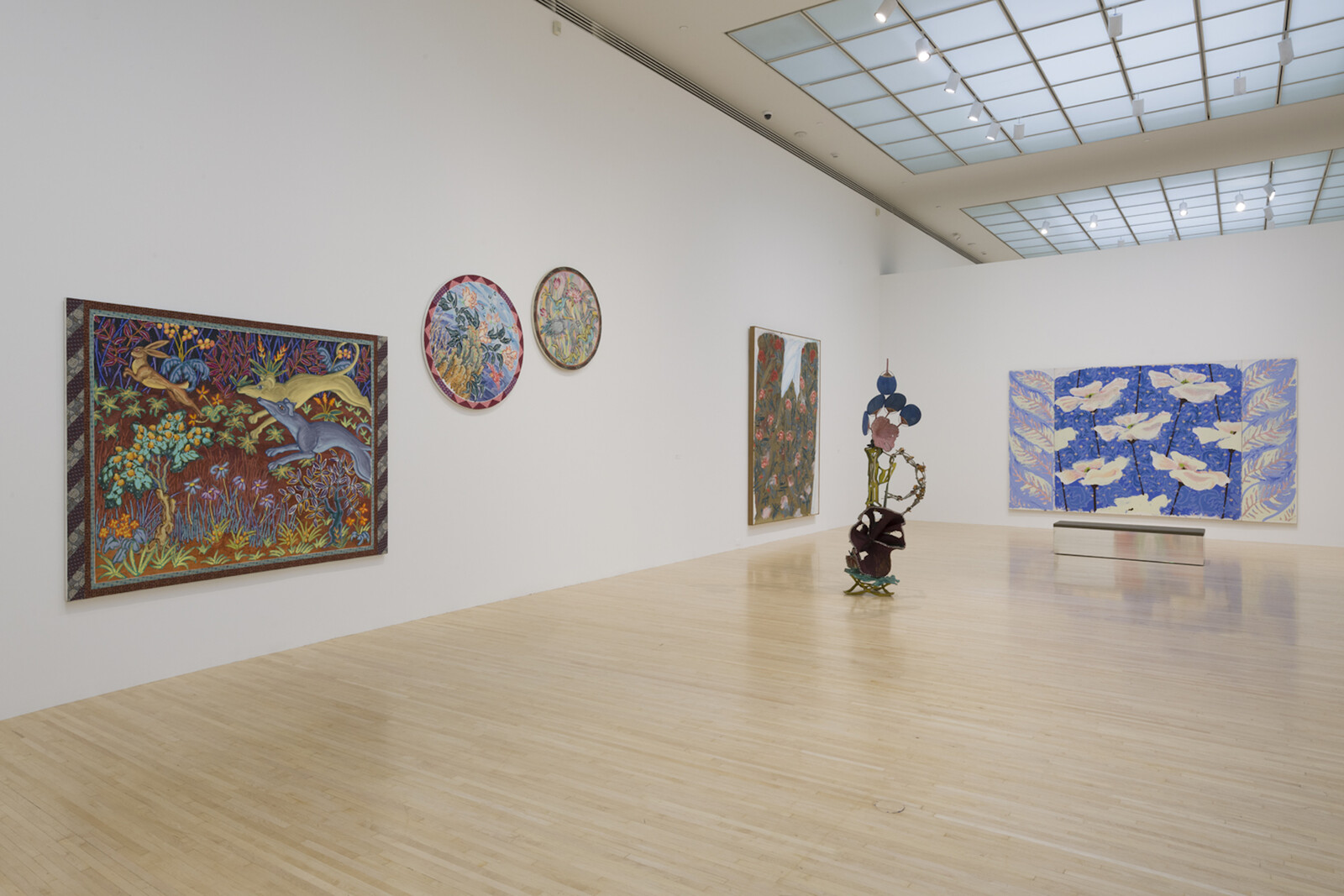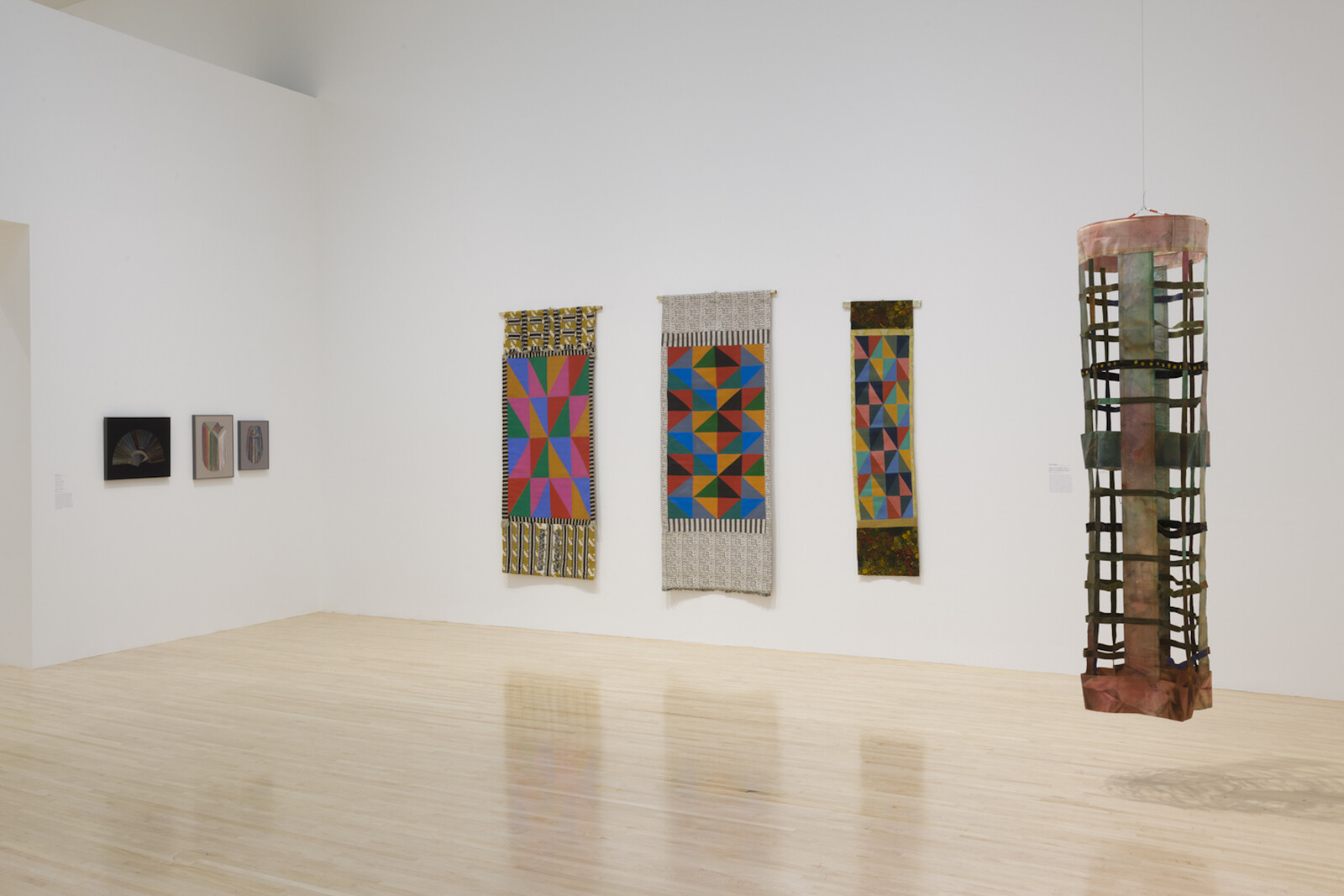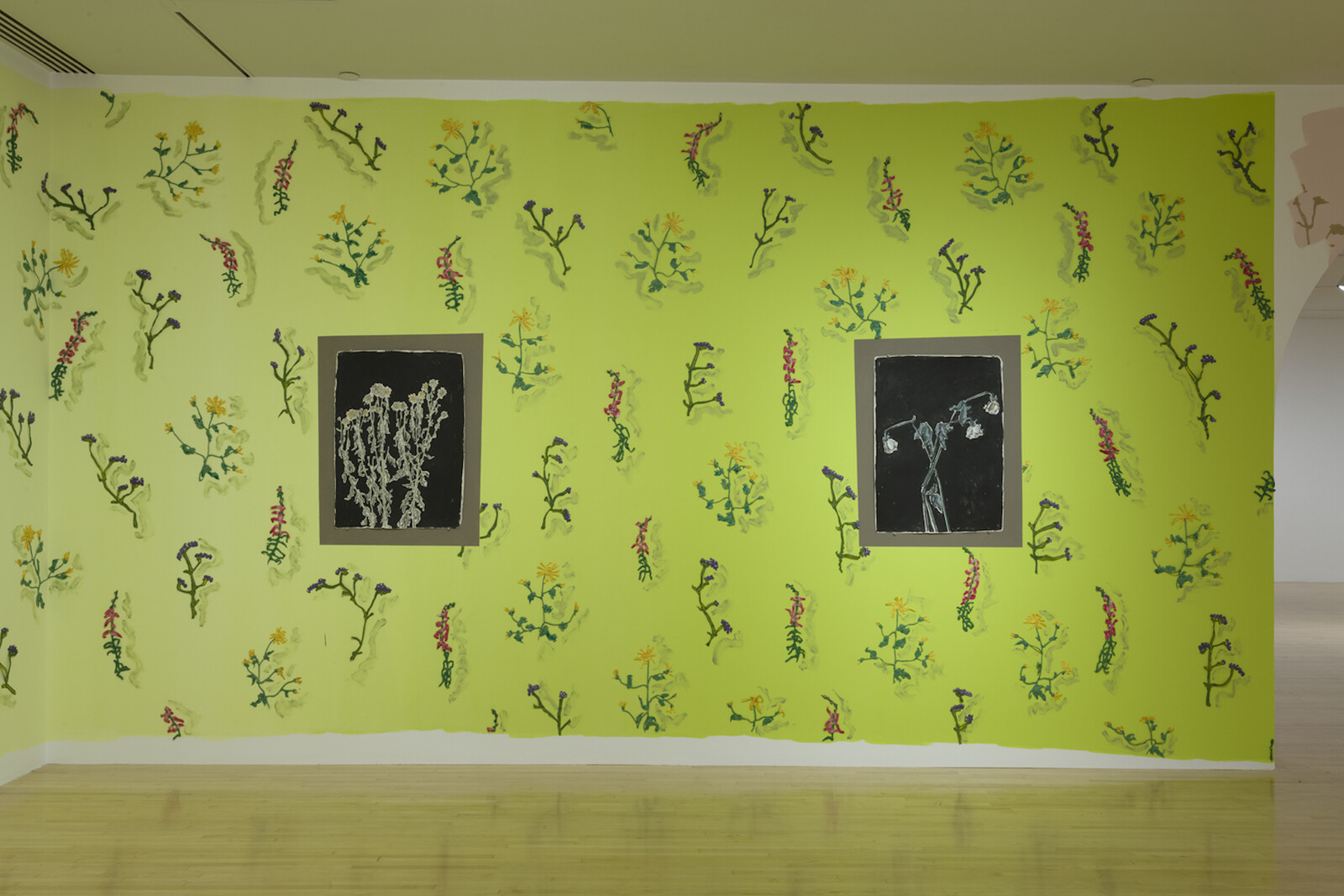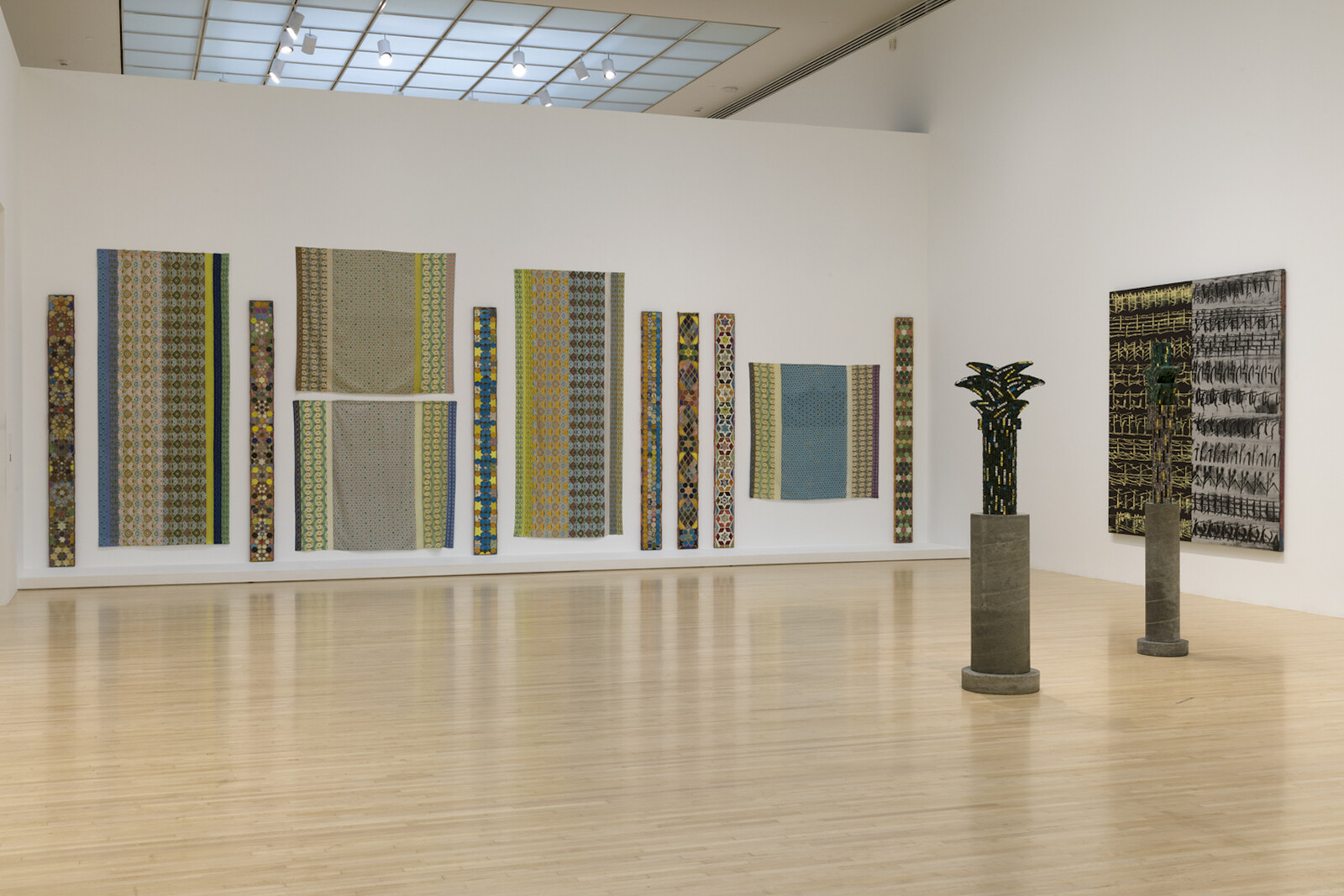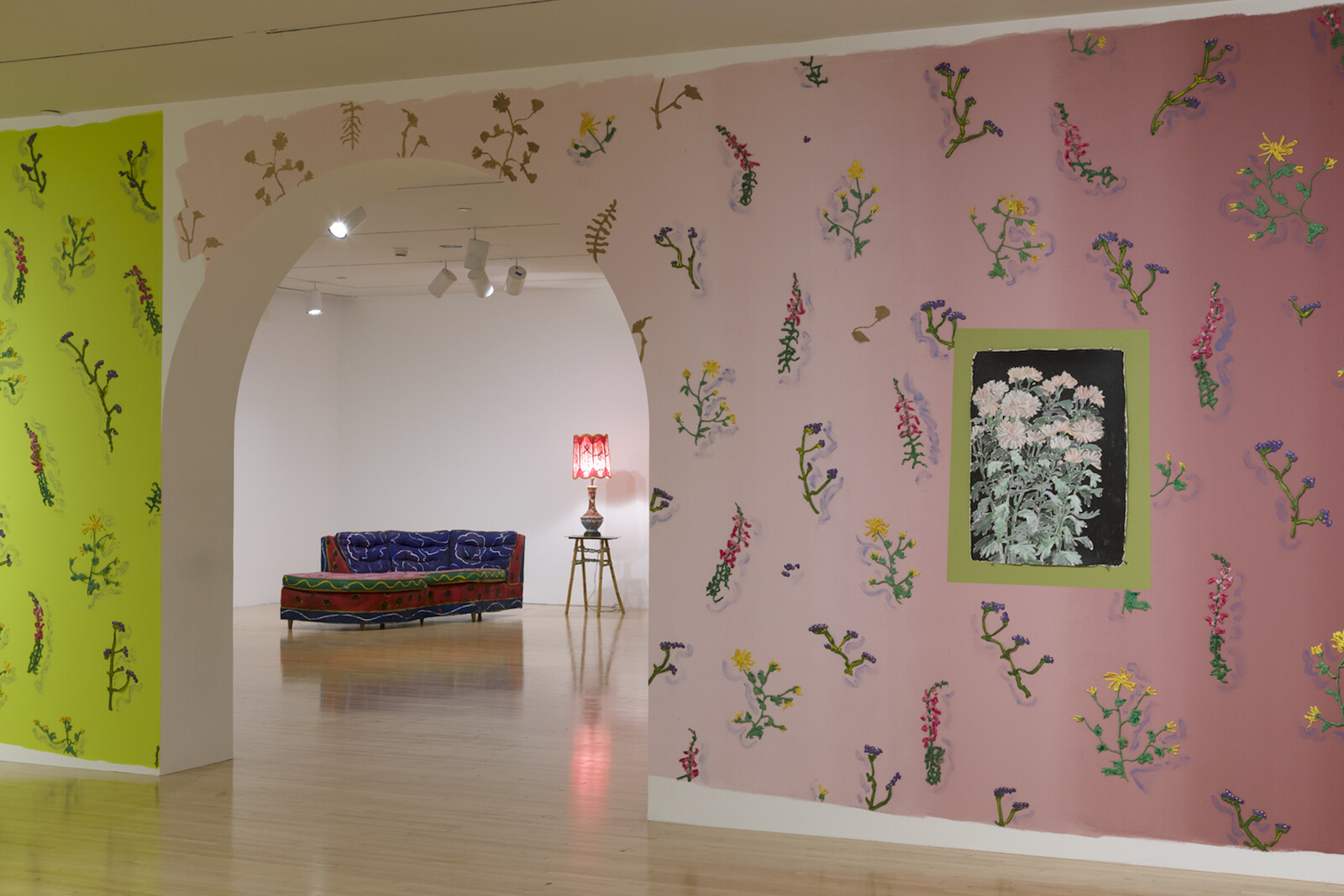Pattern and Decoration (P&D), a tendency which crystallized into a movement in New York in the mid-1970s, is one of the few movements of modern art to have self-designated, rather than been identified either by critical champions (think of Germano Celant and Arte Povera) or by sneering skeptics (Finish Fetish, Fauvism). Its members, though heterogeneous in their work, were united in their artistic tastes and temperament: they espoused a maximalist aesthetic that drew from global traditions and sources, also often aligned with feminist art practices that embraced domestic handicrafts. They had no manifesto, but critical allies including Amy Goldin and John Perreault have written eloquently about their work and aims. According to Perreault, “Pattern painting is non-Minimalist, non-sexist, historically conscious, sensuous, romantic, rational, decorative. Its methods, motifs, and referents cross cultural and class lines.”1
So it is unexpected, and refreshing, to be welcomed into curator Anna Katz’s survey, “With Pleasure: Pattern and Decoration in American Art, 1972–1985,” by works from three artists not typically associated with the movement. Two untitled wall works by Al Loving combining dyed and printed fabrics, one from 1975 and another from 1982, join with Sam Gilliam’s The St. of Moritz Outside Mondrian (1984) and Lucas Samaras’s Reconstruction #20 (1977) to lay out a preemptive defense of P&D’s broad reach and historical significance.
A significance—it should be noted—that is by no means undisputed. While P&D enjoyed some critical and commercial success in its late 1970s heyday, in the ’80s it was entirely eclipsed by Neo-Expressionism and postmodernism. In her excellent catalog essay, Katz is candid about its weaknesses: since P&D arose (in part) as a reaction against the austerity of hegemonic Minimalism, it also risked not being taken seriously by the proponents of the art it opposed. Decoration, after all, situated itself close to pleasure, to aesthetic amelioration (rather than discord or toughness), and to a set of characteristics—the feminine, the queer, the decadent, the domestic, the folksy, the foreign—that were viewed by many in America as categorically marginal.
Over the course of her thoroughly enjoyable, thoughtfully hung exhibition, Katz makes the case that P&D was presciently ahead of its time, and that it is tonally and ideologically of a piece with much contemporary American art produced today. The observation holds especially true in Los Angeles, where painters such as Laura Owens, Rebecca Morris, Dianna Molzan, Zach Harris, and Sarah Cain seem to carry the torch lit by this group in the ’70s. (Although that is not to say that they necessarily acknowledge the influence; P&D has never appeared on most art history syllabi, and—until the recent rash of institutional exhibitions in Europe and the US—remained unknown to many.)
While it’s hardly a criticism to say that not everything looks equally fresh—this is a historical show, after all, and one grounded in the ructions of the early ’70s counterculture—some works look as if they could have been made yesterday. Robert Kushner’s tasseled Faeries (1980), Brad Davis’ circular Bird & Lotus Tondo #4 (1979) and Top of the Peak (1980), Billy Al Bengston’s hanging scrolls painted with irises (‘Zostera Draculas I-V’, 1975), and Tony Robbin’s Japanese Footbridge (1972) stand out in this regard. Why do I find myself mentioning so many male artists in a movement widely seen as feminist? What is especially invigorating about P&D is that it took the precepts of contemporary feminism and applied them as broadly as possible, resulting in an aesthetics and politics of inclusion that allowed for a reassessment of masculinity itself. Without wishing to generalize, the more restrained work in the show (though the term is relative) tends to have been made by women: Valerie Jaudon’s monochromatic Mineral Wells (1980), a hard-edged arrangement of lines drawn from Islamic, Gothic, and Medieval architecture, to majestic effect; Tina Girouard’s instructional piece Wall’s Wallpaper I (1974) which, like Mineral Wells, contains affinities with the work of Sol Le Witt; and Constance Mallinson’s laborious colored-pencil drawings, which emulate the all-over texture of woven fabric.
For a group of artists self-organizing under a single banner, the work in this show is strikingly diverse. As a movement, P&D contains within its purview two contradictory ideas. Pattern—whether in a swatch of wallpaper or an Islamic tiling scheme—is centerless, mobile, disloyal to medium or substrate, “promiscuous” (to borrow a term used repeatedly by Katz), and—usually—either authorless or multi-authored. Decoration, on the other hand, is centered on the subjectivity of the maker, whether as a means of self-identification within a social group, or, commonly, as a personal practice, meant for an audience of one. “With Pleasure,” therefore, contains work—such as Joyce Kozloff’s vertical panels of patterned fabric, paper, and tile sourced from diverse global traditions—that is intent on breaking down hierarchies between craft and fine art, East and West, ancient and modern. Then, a few steps later, one encounters Kushner’s Purple (1975), a painted cotton cape that he sported in performances such as The Persian Line (1975) —akin to the costumes of casual, low-budget fashion shows—which, though they also mix eclectic sources, seem primarily about asserting the individuality of the artist and his fellow performers.
As Katz points out, the problem with defining P&D as oppositional to the Minimalist hegemony of its time is that the precepts of solemnity, restraint, focus, difficulty, and discipline that its members rejected are in fact woven throughout the history of northern European and Protestant American art—an art that has ignored or denigrated countless other modes of aesthetic attention, and ways of being. The work of “With Pleasure” looks fabulous on the museum walls, not because of its politics or originality, but because of its generous spirit, its sense of inclusivity, humanity, and joy. It is exuberantly colorful, formally surprising (rectangles are relatively scarce), and unafraid to appear gaudy or excessive, especially by the aesthetic mores of its time and place. Taken together, it forms a stirring and compelling statement about what art can look like, and can mean, then as now.
John Perreault, “Issues in Pattern Painting,” Artforum Vol. 16, No. 3 (November 1977): 32–36.
